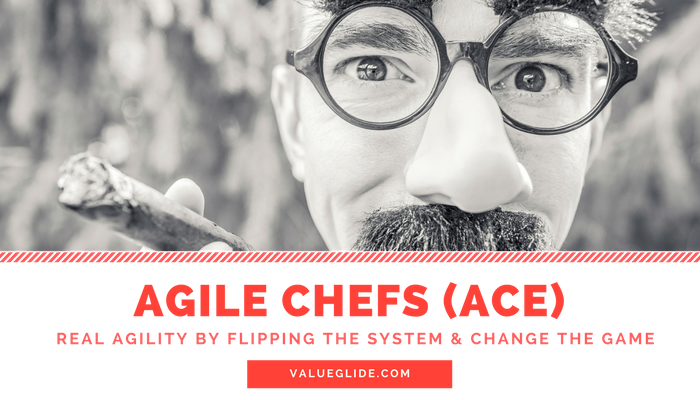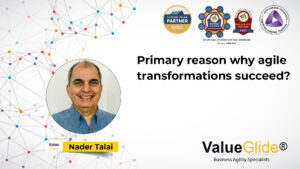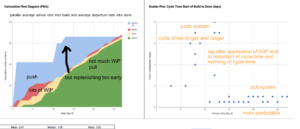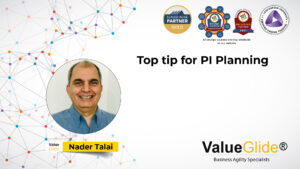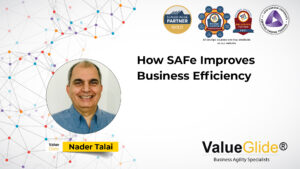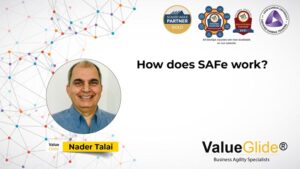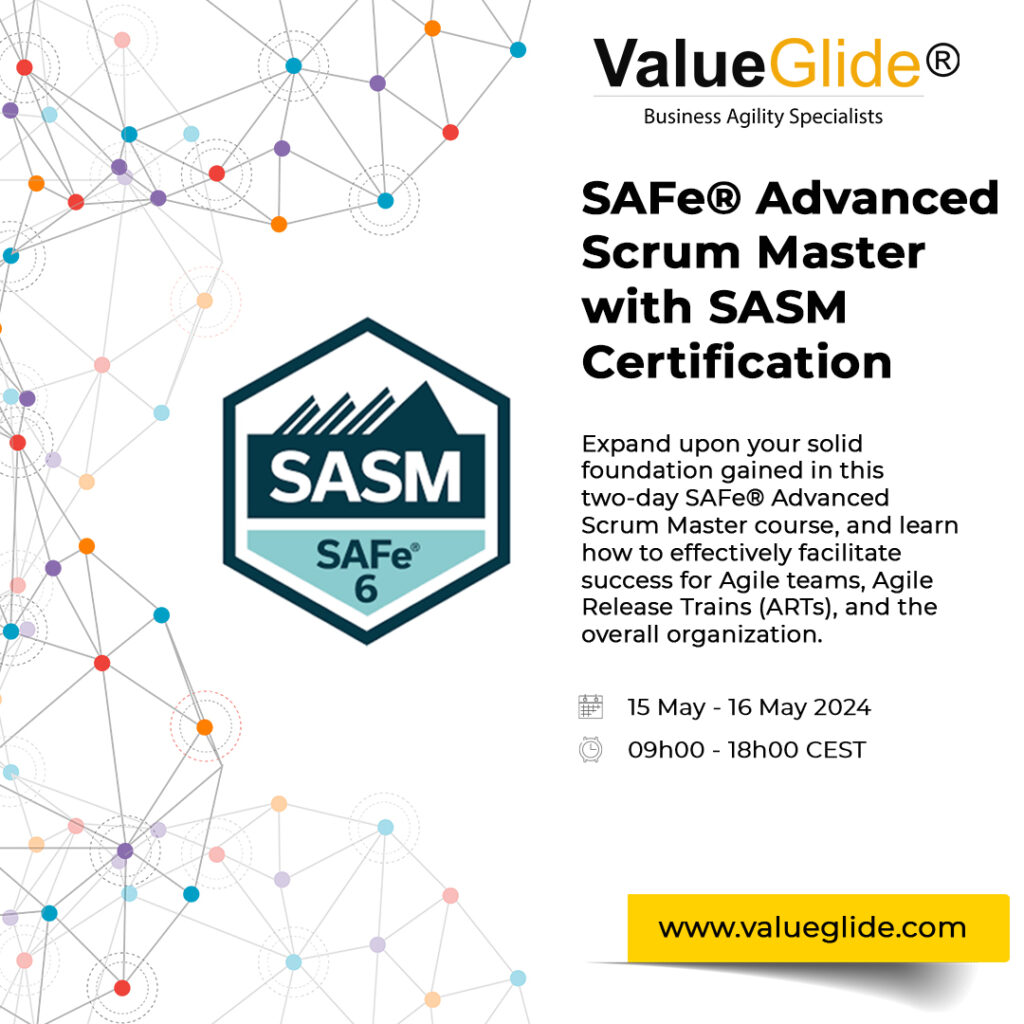Most people have an idea what value an Agile/agility coach offers. We see loads of debate about mentoring versus coaching and let’s not add to that debate.
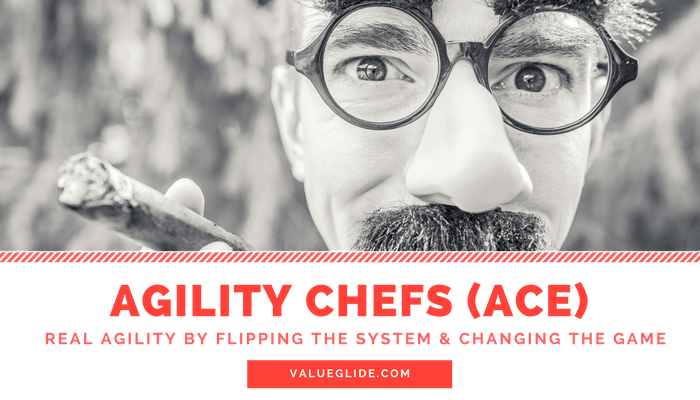
I promote Leandro Herrero’s work because Leandro inspired some of my work. I train and mentor agility chefs. In study groups, we cover change topics like Viral Change, Tipping Point Leadership, etc.. If you are a budding agility chef, and you are fully motivated to do pre-read for my Zoom calls, just email me at [email protected]. I promote the Cynefin sense-making framework in the complexity space; it’s in all of my co-authored training – leadership for agility, Product Ownership for agility, Scrum for the whole team, Learn Kanban Faster. I use Mike Burrows’s wonderful Featureban game in some of my training (another blog post on the data from that coming soon – Little’s Law or Little’s Flaw, let’s see), and I am a backstage supporter of AgendaShift. I attend Adventures with Agile sessions and I went to Barry O’Reilly’s recent talk in London. Some of Barry’s work is similar but different to Value Glide’s in the area of Toyota Kata, and I love what Barry is doing. I love what Tobias Mayer and Michael Sahota are doing (each in their own way) about how we “turn up”. It’s a wonderful community. I work directly with Nader Talai because of his “Yoda like” transformation/changeability wisdom and his inspirational work. Nader and I together have a different angle/niche. Value Glide’s micro-niche is delivering value faster by growing good sustainable agility, for organizations with the greatest challenges. Real agility that flips the system and changes the game. I believe as a community, we need to solve faster delivery of value and truth with lower risk together. Pioneers need early adopters, according to Simon Sinek. And I’m happy to help.
Value Glide clients include those who find the move to the agility mind-set, behaviours, organization design, and ethos the most difficult, like the big banks for example. If I felt my clients deserved to die, I would not help them.
Our work is psychologically and financially dangerous. Budding agility chefs need to be aware of that. I had to acquire skills for dealing with toxic behaviour. I learned the most from my most difficult gigs. I come back stronger, wiser, with a larger sense of humour, more humility, less hair, more wrinkles, and less years to make a difference in the world as time ticks by. Some previous enemies get what agility chefs are about.
In the context of the need for faster delivery of value while maintaining quality and not compromising the organization with large risks and fragility, what value does an agility chef offer that an Agile/agility coach does not usually offer?
- In-depth transformation & change expertise, the people side of things, in the sense of getting ready for structure change (even if real and true structure change is the biggest part), mindset change, behavioural change, habit change, belief change. Professional coaching is useful but I’m often talking about people who don’t want to be coached, people who would get irritated by attempts at coaching implicitly or explicitly, unless permission is given. People can have deep beliefs and steadfast mental models.
- Situational leadership, such as contextual use of Goleman’s six leadership styles, is a necessity. Coaching isn’t always the most useful approach. While coaching is my default position, from a change perspective, I sometimes(rarely) need to user Tipping Point Leadership, taking on a visionary leadership role before reverting to coaching. Different strokes for different folks….. A typical agility coach would not be versed on Tipping Point leadership or understand where and when it’s needed.
- Minimized confirmation bias – agility is a means to an end and might not be the right answer to the problem we’re trying to solve. An Agile coach tends to recommend Agile. A CST or PST is likely to recommend Scrum. A Kanbaner is likely to recommend Kanban. A CLT is likely to recommend LeSS if the cap fits. I am doing last minute reality checks on the viability of implementing LeSS Huge. I am training a client on SAFe, much to my discomfort while realising in my heart of hearts that they can’t do anything else at scale (having trained 50 audiences from their company); I recommended Kanban at team level to avoid the corruption of Scrum. I have implemented Nexus+ twice. Agility Chefs are multi-faceted. I had to prioritize as in 2017 no one needs generalising generalist. Nader Talai balances my skills and experience with his. Knowing who to pair with is key.
- Assistance on how to deal with the corporate/customer enforced Agile pill and making our own approach undetected by the corporate anti-bodies.
- An anti-dote to WaterScrumFall / BigBangScrum / WITerFall / WAgile/Fragile.
- An anti-dote to cynically applied frameworks.
- An appreciation that in the 21st century, resilience is more important than better, faster, cheaper.
- I prefer to see Spiral Dynamics Integral being applied for helping more effective conversations with individuals. I am a member of the SDi community. Professor Clare Graves never had his independently assessed evidence-based work formally peer reviewed, although it did seem to go through the scientific method with independent judging panels for nine years. I am trying Black Box Thinking, attempting to disprove ideas. What I can say from my own experience is I have benefited from better relationships with difficult (from a transformation point of view) stakeholders, directly from SDi. It must have an extraordinary placebo effect, as it’s repeatable, at least for me. I will write another blog post on my Level 1 training by Jon Freeman and Rachel Castagne (preview is that Spotify approach deals with SDi really well, appealing to a range of vocabulary for all sorts of thinking). I’m told that the Level 2 training for Spiral Dynamics Integral brings the skills to life through practice. I am looking forward to upgrading those skills in October 2017.
I believe the thought leaders from agility and change need to come together for the first time to agree a path for growing sustainable agility. I read their material and I put their ideas into a survey tool for stack ranking. I struggled to get a critical mass to come to the table. I am thankful to Dave Snowden for his critique and I killed the probe. I believe I have an answer, as it has worked for years now. The fly in the ointment is I don’t last as long with clients like Henrik Kniberg so I rely on my proteges to keep it going (and they do to be fair). Some of the proteges at previous clients are still proteges (I run Zoom calls). Because the I am the Change approach is so effective, leaders in the blast radius usually see the change hitting them much sooner than they had appreciated. People usually don’t want to go back to the old way. It’s like spreading a good disease, and I am passionate about it, and apply all on focus & energy on it. I am inspired by Eliyahu Goldratt, Peter Senge, Leandro Herrero, Bill Bratton, Boston Consulting Group (for their DICE Calculator), Yves Morieux, Simon Sinek, Marshall Goldsmith, Don Beck, Matthew Syed, Edgar Schein, Jocko Willinck / Leif Babbin, General McChrystal, David Marquet, Gene Kim, Andy Carmichael, Mike Rother, and Nader Talai.
I need support for spreading this message. Maybe getting agility thought leaders and change thought leaders together is a silly idea. All credit to Robert C. Martin for making Snowbird happen. I wonder if I should give up trying. What would I want the thought leaders to do if I got them together? I’d want them to review the lists I prepared, and run pair wise even asynchronously. I’d want them to suggest even better answers. New answers would trigger new pair-wising. If anyone didn’t like the results, they could drop out and reject them, but at least I have their opinions baked into the results.
Who am I talking about:
- Leaders in agility, e.g., Humble, Kim, Larman, Vodde, Schwaber, Martin, Henderson, Fowler, Appelo, Sahota, (Tobias) Mayer, (Michael) James, Cohn, (Kent) Beck, Jeffries, Anderson, Beedle, Marick, Leffingwell, Ambler, Sutherland, Atkins, trainers (such as the top CSTs, PSTs, CLTs, AKTs who still practice regularly what they preach with clients)
- Leaders in Lean in an agility context, e.g., Rother, Reinersten, Anderson, Vacanti
- Leaders in change, e.g., Kotter, Senge, Herrero, Gladwell/Bratton, Morieux, O’Reilly, Molesky, Burrows, Powers, (Don) Beck, Schein, Rother
- Leaders in business & life, e.g., Musk, Gates, Sinek, Goldsmith, Syed, Robbins, Page, Brin, Cook
- Many respected colleagues… the list goes on, they know who they are
Who would you add? Who would you take out?
It would be interesting to see what transformation techniques work well for people in practice despite what thought leaders say.
I like WAGGL, it allows one to add better answers but my license is limited. If the above thought leaders are not interested, why not have a go yourself? I give you a warning, there are many options to pairwise. You’d be influencing thinking through your participation. Here are the links for the pairwise surveys for Agility Chefs (ACe) – Building capability for real agility that flips the system & changes the game –
- Agendas – https://app.waggl.com/i/6fbfbbea
- Values – https://app.waggl.com/i/f43eb9d3
- Principles – https://app.waggl.com/i/ec57e0c4
- Practices – https://app.waggl.com/i/5303ea45 – as in what works?

